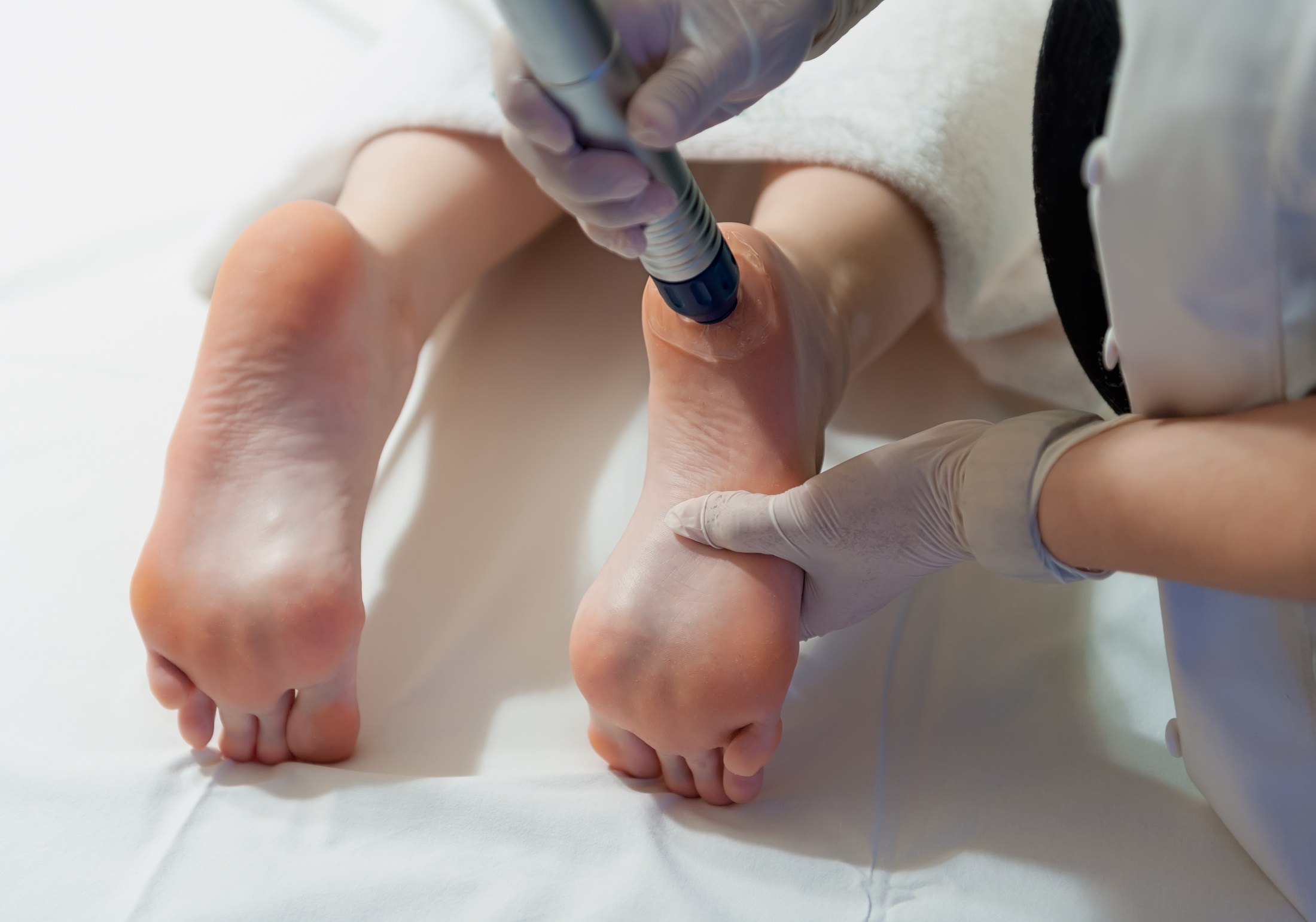Minimally invasive shock wave therapy can be an effective therapeutic strategy, executed after a careful diagnostic evaluation.
With Dr. Maria Cristina D’Agostino, orthopedic and trauma surgeon at Humanitas Hospital, we dispel myths and clarify doubts regarding the usage fields, types, and conditions of shock waves.
Isn’t shock wave therapy used for kidney stones?
Shock waves were introduced for the first time in medicine in the early nineties for the treatment of kidney stones (lithotripsy). However, in the years following their immediate scope of use, they rapidly expanded to treat diseases of the musculoskeletal system and not only (shock waves extracorporeal).
Does shock wave therapy ionize radiation?
Shock waves are acoustic waves and thus, due to the nature of their mechanics, they do not present characteristic risks associated with radioactivity.
Can shock wave therapy be implemented in orthopedics for the treatment of various diseases of the tendons and bones?
Currently, the main field where the extracorporeal shockwaves are applied to, is precisely for the tendons pathologies (especially in the chronic phase and refractory to other therapies), as well as for bone regeneration disorders (non-union and consolidation delays).
Is shock wave therapy designated for tendinopathy only in the presence of calcifications?
Shock wave therapy may be indicated for tendon pathologies even in the absence of calcifications.
Is the aim of treatment with extracorporeal shockwaves in the musculoskeletal field simply to dissolve calcifications?
The goal of therapy (and ultimately the therapeutic effect tied to the action of shock waves), is not to direct a traumatic problem, to avoid injury to the tissues, and to avoid crushing the calcifications by direct rupture. The therapy is applied through a very delicate mechanical action (a sort of micro-massage on cells and tissues), that is able to stimulate certain biological reactions. These reactions include the anti-inflammatory effect, anti-edema and pain in addition to locally improving microcirculation. It is possible in some cases for calcification to be reabsorbed, however, this takes place through the secondary biochemical mechanism.
Can shock wave therapy be a viable alternative to surgery?
In some cases the treatment of bone disorders and tendons pathologies with shock waves can save the patient from having to undergo surgery. In any case, it does not preclude, if necessary, the ability to undergo surgery.
Can shock wave therapy be combined with other different types of therapies?
The treatment with shock waves do not interfere with other types of physical therapy when combined together. The combination of rehabilitation exercise therapy and possible nutraceuticals (the so-called food “supplements”), can be a winning strategy for treating tendinopathy.
Furthermore, treatment with shock waves can also be indicated in case of pain, persistent edema and stiff joints after surgery, allowing for faster functional recovery.
Is there only one type of shock wave therapy?
There are basically two types of “waves”: the focal extracorporeal shockwaves and the radial waves (orballistic). The latter are generated with a type of “tire mechanism ” and use of a compressor. They are applied in the treatment of ” trigger points ” ( painful points ), and muscle and tendon contractures. For both types of shock waves, in clinical practice it is essential to receive a correct diagnosis, aid from an expert in the field, and use of appropriate equipment before proceeding to the treatment.
Are shock waves dangerous in a sense that they cause injury to the tissues?
If executed properly with expertise, appropriate equipment, trained professionals and after a correct diagnosis, a therapy with extracorporeal shock waves can be performed safely, resulting in few significant side effects. If the therapy is not executed properly, it can cause bruising.
Is the application of shock wave therapy painful?
The therapy, is generally well tolerated as long as it is carried out by a professional as described above. In cases of bone treatment for which high energies need to be implemented, a local anesthesia may be performed to make the application more tolerable.
In recent years, have the indications for treatment of other conditions with shock waves expanded?
The discovery that shock waves can exert a stimulus towards the regeneration and repair of tissues has expanded the scope of their therapeutic applications even in Regenerative Medicine. They can be applied to successfully treat wounds and sores of difficult resolution, loss of substance of post-traumatic origin (also in the days immediately following trauma), as well as painful scars of different origin.
Can shock wave therapy be repeated?
In case of partial benefit, the therapy can be repeated since it does not cause significant side effects. With the repetition of therapy whenever necessary, additional benefits can be generated within time.
Can shock waves temporarily “wake up” pain in between treatments?
A flare-up of pain in between shock waves treatment is possible, however, it does not represent a wake-up call. It is simply a temporary reaction to stimulation, which activates the healing process.
Is the effect of shock wave therapy immediate?
The therapeutic action of the shock waves is linked to a series of complex biological reactions, which require time to manifest themselves and for which it is necessary to wait even several weeks in order to fully appreciate the beneficial effect.
-
3,400 Physicians
-
110,400 Annual surgeries
-
190,400 Annual Inpatient Admissions
-
928,000 Patients



